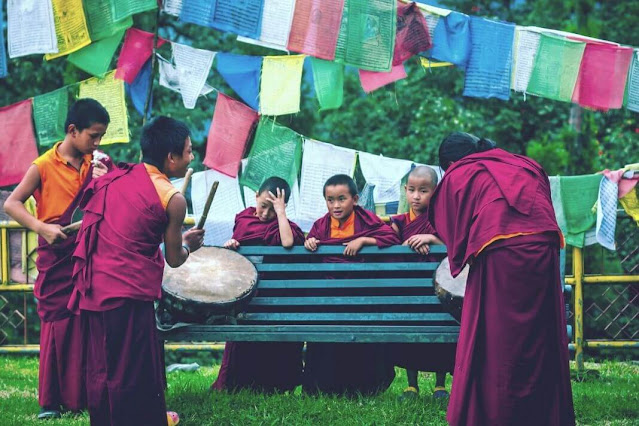Introduction
Sikkim is a state in northeastern India. Sikkim is bordered by Tibet Autonomous Region of China in the north and north-east, Bhutan in the east, Kosi Province of Nepal in the west and West Bengal in the south. Sikkim is the least populous Indian state and is the smallest state. It is also host to Kangchenjunga, the highest peak in India and the third highest peak on Earth. The capital and largest city of Sikkim is Gangtok.
Sikkim was an independent state ruled by the Nam Gyal monarchy, but due to administrative problems and merger with India and referendum, it merged with India in 1975 with a referendum. After that referendum, monarchy ended and democracy emerged within the framework of the rule-system of the Indian Constitution. Best Places to visit in Sikkim and Tourist Places.
Sikkim has the smallest population among the states of India, and the smallest area after Goa. Sikkim is quite diverse geographically. Kanchenjunga, which is the third highest peak in the world, is located in the north-western part of Sikkim on the border with Nepal and this mountain peak can be easily seen from many parts of the state. Sikkim is a major center of tourism in India. Sikkim is famous for its cleanliness, natural beauty, political stability etc.
History of Sikkim:-
Sikkim is a small mountain state of 2,740 square miles (7,096 square km) in the eastern Himalayas. Sikkim was founded in the 17th century as a Buddhist monarchy with strong ties to Tibet. The Namgyal dynasty established the kingdom, which was ruled by Buddhist priest-kings known as Chogyal.
Sikkim became a princely state of the British Indian Empire in 1890. The session became a protectorate of the Union of India in 1947, after Indian independence, and the Republic of India after 1950. In 1975, Sikkim became an Indian state.
Sikkim has achieved its ambition to convert its agriculture completely to organic between 2003 and 2016. Sikkim has become the first state in India to achieve this distinction. Sikkim is one of the most eco-conscious states in India, having banned plastic water bottles and polystyrene products in all government functions and meetings (in the entire state).
Culture of Sikkim:-
Western rock music is often heard in homes and restaurants here, even in non-urban areas. Hindi music has also made its place among the people. Pure Nepali rock music and Nepali poetry over western music are also very popular. Football and cricket are the most popular sports here. Best Places to visit in Sikkim and Tourist Places.
Almost all houses in Sikkim are rural, built primarily of rigid bamboo structures covered with flexible bamboo coverings. To maintain heat in the house, it is also coated with cow dung. In the high altitude areas of Sikkim, houses are mostly made of wood.
Education of Sikkim:-
The literacy percentage rate is 69.68%, which is 76.73% among males and 61.46% among females. The number of government schools is 1545 and there are also 18 private schools which are mainly in cities. There are about 12 colleges and other schools for higher education in Sikkim. Sikkim Manipal University (SMU) provides higher education in the fields of engineering, medicine and management. It offers distance education in many subjects. Advanced Technical Training Centre(ATTC) is at Bardang, Singtam and Centre for Computers and Communication Technology(CCCT) is a private college in Jorethang, Sikkim, India. It was established in 1999 and is located at Chisopani, PO Nandugaon, South Sikkim.
Sikkim Professional University (SPU) is a private university in Sikkim, India that was established in 2008. It offers undergraduate and postgraduate programs in engineering, technology, management, science, and the arts. SPU is recognized by the University Grants Commission (UGC) and is affiliated with the Association of Indian Universities.
Beautiful Famous Temples of Sikkim:-
1. Thakurbari Temple:- Thakurbari Temple is a Hindu temple in Gangtok, Sikkim, India. It is one of the oldest Hindu temples in Sikkim and is dedicated to almost all Hindu deities.
2. Kirateshwar Temple:- The Kirateshwar Mahadev Temple is a Hindu pilgrimage site located in Legship, West Sikkim, India. The temple is dedicated to Lord Shiva Ji and is considered a sacred site by both Hindus and the Kirati people. This temple is situated on the banks of Rangit River. It is said that whoever prays at this temple with a true heart, his wishes are fulfilled.
3. Hanuman Tok:- Hanuman Tok is a temple located in Gangtok, Sikkim, which is known for fulfilling wishes. This temple is located at an altitude of 7,200 feet, about 11 kilometers from Gangtok city.
4. Ganesh Tok:- Ganesh Tok is a Hindu temple in Gangtok, Sikkim, India. This temple is dedicated to Lord Ganesha. It was constructed between 1952 and 1953. This temple is situated at an altitude of 7 km from Gangtok.
5. Baba Mandir:- There is a temple in Sikkim dedicated to Baba Harbhajan Singh, an Indian Army soldier who died in 1968. This temple is at an altitude of 12,123 feet above sea level, and is located about 52 km from Gangtok. Baba Mandir, which is also known as Baba Harbhajan Singh Mandir.
Famous Food in Sikkim:-
Sikkim has many famous foods, including:
1. Momos
2. Thukpa
3. Dal Bhaat
4. Dhindo
5. Phagshapa
6. Sha Phaley
7. Gundruk and Sinki
8. Sael Roti
9. Chang
10. Thenthuk
11. Kinema Curry
12. Gya Kho
13. Kodo Ki Roti
14. Masauyra Curry
15. Niguru with Churpi
16. Chhurpi Soup
17. Bamboo Shoot Curry. etc.
Famous Nature & Parks in Sikkim:-
1. Gurudongmar Lake:-
Gurudongmar Lake is one of the highest lakes in the world and India. It is situated at an altitude of 5,425 meters (17,800 ft) in Mangan district of Sikkim. The lake is considered sacred by Buddhists, Sikhs and Hindus. It is named after Guru Padmasambhava, also known as Guru Rinpoche, the founder of Tibetan Buddhism who lived in the 8th century.
Gurudongmar Lake is a major source of Teesta River. It is close to the Tibetan and Chinese border. Gurudongmar Lake is a crystal clear lake that reflects the snowy mountains that surround it.
2. Yume Samdong(Zero Points):-
Yumesamdong, also known as Zero Point. It is a popular tourist destination in Lachung, North Sikkim. Yumesamdong is located at an altitude of 15,300 feet above sea level, where three rivers meet. The area is covered with snow for most of the year.
The best time to visit Zero Point is between April and May, when the rhododendrons are in bloom. There is heavy snowfall here in December and January, hence one should not go during this time.
3. Buddha Park:-
Buddha Park of Ravangla, also known as Tathagata Tsal. It is located near Rabong in South Sikkim, India. Buddha Park was built between 2006 and 2013. It houses a 130-foot (40 m) tall statue of Buddha. Buddha Park is open every day from 9 am to 6 pm.
This park was built by the Government of Sikkim in collaboration with the local people to promote religious tourism. The Dalai Lama consecrated the park in 2013. The park is equipped with walkways, gardens and space for visitors to enjoy the surrounding environment.
4. Kanchenjunga Falls:-
5. Yumthang Valley:-
Yumthang Valley, also known as Sikkim Valley of Flowers, is a nature sanctuary in the North Sikkim district of Sikkim, India. The Yumthang Valley is located at an altitude of 3,700 meters and is home to the Shingba Rhododendron Sanctuary, which has more than 24 species of rhododendron.
The Yumthang Valley is known for its flowering season, which runs from late February to mid-June. During this time, the valley is covered with rainbow colors of numerous flowers in bloom.
Conclusion:-
Sikkim, a mountainous state in northern India, has many famous places to visit, including temples, national parks, and other attractions. Sikkim is one of the Indian states famous for its special green environment and attractive surroundings. In Sikkim, tourists find peace of mind in the lap of nature. Sikkim is famous for its stunning beauty. The immense height and beauty of this place mesmerizes the travelers. People come here to enjoy trekking, making it a great tourist destination.










.jpg)





No comments:
Post a Comment